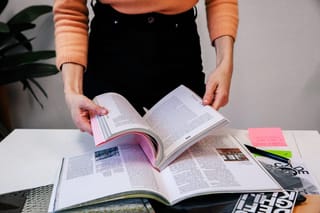Recently, Chinese technology giant Huawei was involved in a dispute with French luxury fashion house, Chanel. The basis for this dispute came down to a perceived similarity between the logos of both brands. This article will extract key principles from this case to explain trade mark similarity and outline how similar trade marks are compared in Australia.
Chanel vs Huawei: Call the Fashion Police
In 2017, Chanel instigated opposition proceedings against Huawei in the European Union Intellectual Property Office (EUIPO) to block Huawei’s logo registration in class 9. Chanel claimed that their prior registration for a logo consisting of interlocking C’s in class 9 was confusingly similar to Huawei’s proposed logo. Therefore, Huawei’s proposed logo should not be allowed to proceed to registration. A side by side comparison of both marks is shown below, with Huawei’s logo on the left and Chanel’s on the right:
Spot any confusing similarities? Well, the European General Court could not seem to find any in a final decision heard after a string of failed appeals by Chanel at the EUIPO’s Opposition Division and the Board of Appeal. In 2019, the Board of Appeal found that:
The European General Court held the same view and found that the marks were dissimilar and rejected the opposition on that basis. As the case presently stands, Chanel still has one last means of appeal at the European Union High Court to assert their claim and block Huawei’s registration.
Why Are Trade Marks So Important?
So, what does this tell us about why brands police their trade marks against third parties? A trade mark is a vital commercial asset to a brand. This is why many global brands often zealously enforce their rights concerning the trade mark. Whether it is a plain word, image or symbol, the mark forms an integral part of consumers’ identification with the brand.
For example, the Chanel logo is synonymous with wealth, luxury and the idea of restricted access and exclusivity. It is a status symbol with aspirational value. It is clear then that Chanel (or any other brand) would actively police any competition, threat or ‘confusingly similar’ imitators in the market as a form of self preservation. This concept is also applicable to small businesses. They are trying to create a lasting impression in the marketplace through a memorable trade mark. The trade mark is generally the first impression of a business, and first impressions are lasting.
Continue reading this article below the formThe Test for Similarity
In Australia, trade mark similarity is evaluated under the Trade Marks Act 1995 (Cth). The test is whether the trade marks are:
- substantially identical; or
- deceptively similar.
From a consumer’s perspective, the test must establish whether there is likely to be any confusion in the marketplace.
‘Substantially Identical’
When determining whether the trade marks are ‘substantially identical’, you should compare the trade marks side by side. Note their similarities, differences and essential features.
‘Deceptively Similar’
If the trade marks are not determined to be substantially identical, they may be ‘deceptively similar’. The comparison is a general recollection or overall impression. Bear in mind that the impression should be in the context of the everyday consumer.
You should take a look at further detailed examples and additional information on ‘deceptively similar’ trade marks.
Challenging Third Party Trade Marks
Suppose you come across a third party attempting to file a trade mark that is too similar to yours. In that case, section 57 of the Trade Marks Act allows you to oppose the registration of that trade mark. You can oppose on the basis that it is either ‘substantially identical’ or ‘deceptively similar’ to your trade mark. If your opposition is successful, the trade mark will not proceed to registration. Note that the test for similarity is not the only ground of opposition available to you. For a full list of opposition grounds, please see our article here.
What Can I Do Before Applying for a Trade Mark?
Before applying for a trade mark, it is important to contact a lawyer for advice on your options. This may involve a search of the Australian trade marks database on IP Australia. The search will generally uncover any issues that may arise concerning conflicting or similar trade marks.
Suppose you encounter any obstacles with the proposed trade mark. In that case you can use some strategies to circumvent the risks or conflicts with existing trade marks. A trade mark attorney or lawyer can help navigate these risks. They can also help to ensure you are not infringing on any existing trade mark rights.
Key Takeaways
The Chanel vs Huawei case tells us a few things about brand identity and protection:
- a brand’s trade mark is one of the most important assets a business has;
- the test for trade mark similarity in Australia is whether the trade marks are substantially identical’ or ‘deceptively similar’;
- if you are a business looking to register a trade mark, it is important to conduct the relevant searches for due diligence to ensure that you are not infringing on any existing rights; and
- if you believe that a third party is attempting to register a trade mark that is ‘substantially identical’ or ‘deceptively similar’ to yours, a recourse of legal action may be available to you.
Therefore, if you are considering applying for a trade mark or enforcing your rights concerning an existing trade mark, contact LegalVision’s trade mark lawyers on 1300 544 755 or fill out the form on this page.
Frequently Asked Questions
If trade marks are either substantially identical or deceptively similar, they are too similar to be registered at the same time.
In this case, you should challenge the trade mark application.
We appreciate your feedback – your submission has been successfully received.












